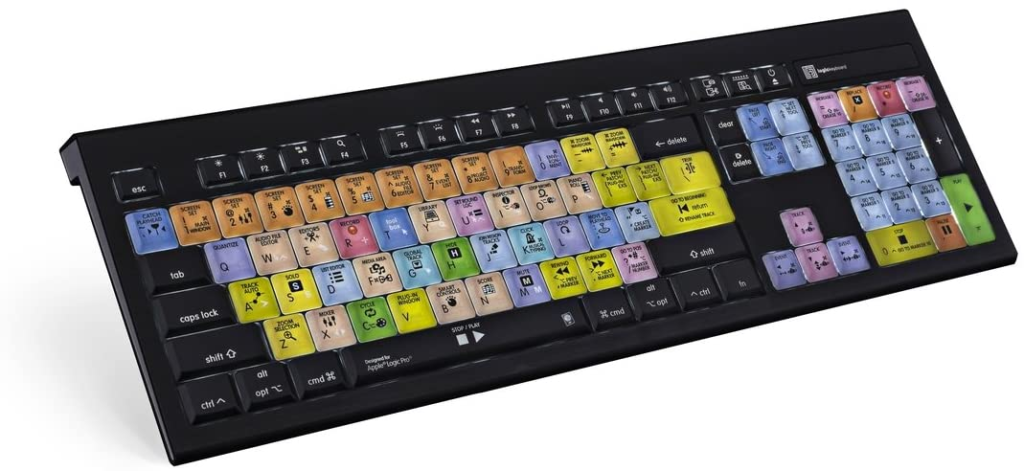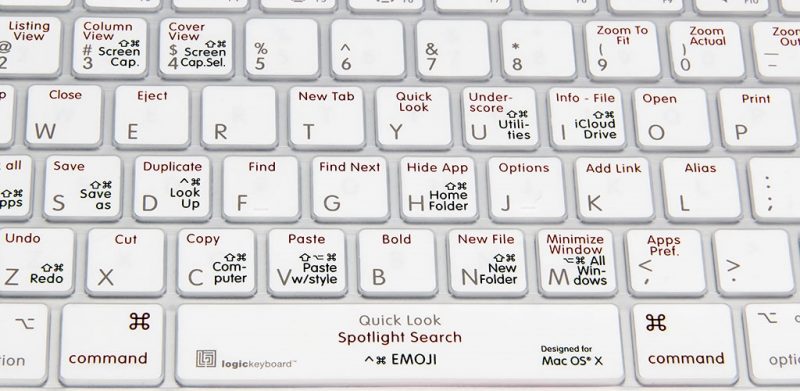

APPLE LOGIC PRO X KEYBOARD SHORTCUTS SOFTWARE
Key commands can place even the most obscure Logic Pro features at your fingertips!Īudio‑related software has always made use of QWERTY keyboard shortcuts to streamline functions that might otherwise require a lot of mousing. Every possible action in Logic Pro that can be assigned to a key command can be found in the Key Commands menu.

Shift C: Select equal colored regions/events.Using these can have a great impact on your workflow as you won’t have to wander around with your music selecting each track manually. Used to select similar tracks and regions.

Command Ctrl B: Bounce in place (tracks).

These key commands will let you quickly export, bounce or bounce in place any MIDI/Audio region. Alt/Option Pageup: Select previous tool.Key commands for rapidly changing your current tool. Shift Alt/Option Command C: Color track (by region color).Shift Alt/Option C: Color region (by track color).Ctrl Shift N: Name regions by track name.Shift Alt/Option Command N: Name tracks by region name.Option C: Show/hide color selection window.Key commands for quickly renaming and coloring regions. Ctrl Command O: Toggle current track automation latch or offĬolor Selection Window (Option C) Organization Commands.Ctrl Command O: Toggle current track automation read or off.Shift Command R: Repeat section between locators (will duplicate the regions between your selected locators).Shift Command ,: Move locators backward by cycle length.: Move locators forward by cycle length (will move your cycle forward on the arrangement) U: Set rounded locators by regions (same as the previous key command, but will round the value to the nearest beat).Command U: Set locators by regions/events (will cycle/loop the entire length of your selected region, event, or track).Shift R: Capture as recording (captures the most recently played MIDI notes on any MIDI instrument).Shift *: Record/record toggle switching.C: Cycle length (loop a selected area in the arrangement).Alt/Option S: Set solo lock mode (useful if you want to solo multiple tracks at once while navigating with your arrow keys).Shift Enter: Play from left window edge or beginning.For example, quickly playing your track from the beginning or looping a selected region inside your arrangement. Command Shift D: Create a track stack containing the selected tracksīasic key commands are used to control your track’s playback.Command Backspace: Delete the selected track.Alt/Option Command X: Create a new external MIDI track.Alt/Option Command S: Create a new software instrument track.Alt/Option Command A: Create a new audio track.You’re probably familiarized with some of them such as Command C/X and Command V, but they’re also worth recapping. These are the most quintessential ones to ensure a smoother workflow. We are going to divide the most essential Logic Pro shortcuts into different categories, and explain in detail what each one does so you can better apply them in your music production routine. Essential Logic Pro X Shortcuts Which Will Make Your Life Easier


 0 kommentar(er)
0 kommentar(er)
